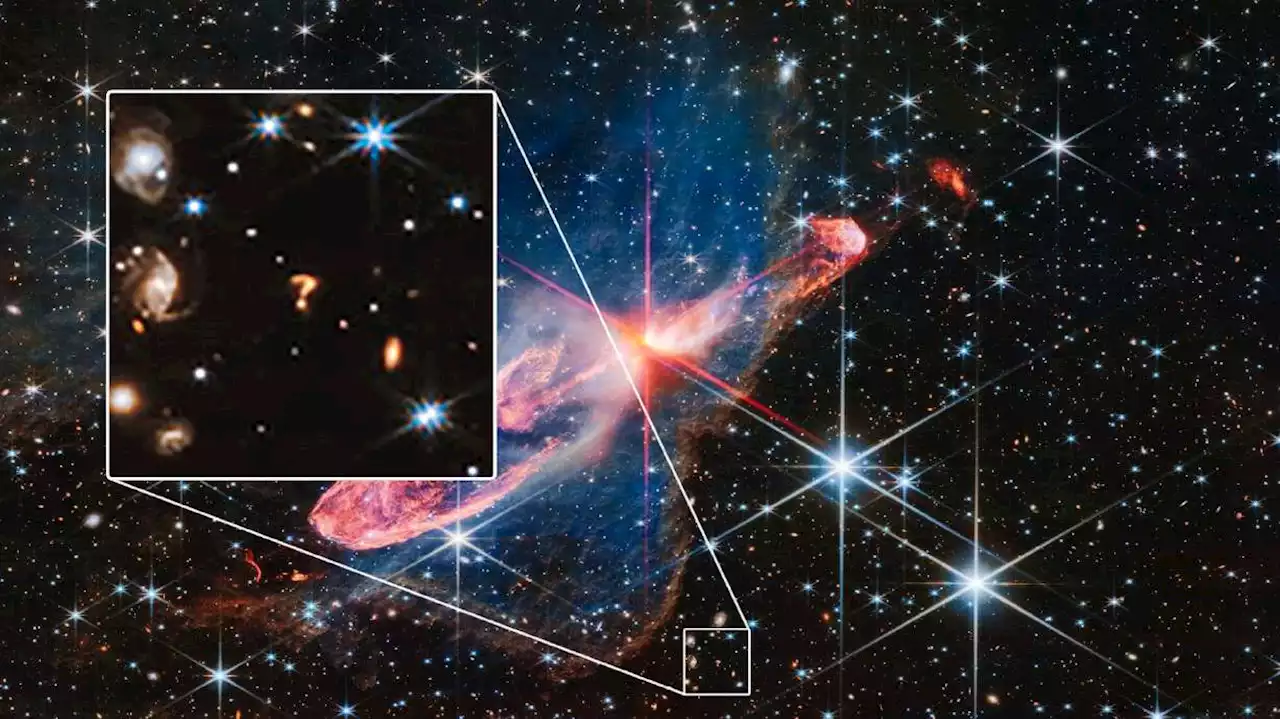A cosmic object in the shape of a glowing question mark has photobombed one of the latest images captured by NASA's James Webb Space Telescope — and scientists think they know what it might be.
WASHINGTON — A cosmic object in the shape of a glowing question mark has photobombed one of the latest images captured by NASA'sThe original near-infrared image, released July 26, depicted a pair of young stars named Herbig-Haro 46/47. Found 1,470 light-years away in the Vela constellation within the Milky Way galaxy, the stars are still actively forming and closely orbiting each other.
The Webb telescope usually allows you to see six or eight stellar "prongs" if you look closely, Caplan added. "It tells you immediately that it's not a star," he said of the question-mark-shaped phenomenon. "And when that happens, they can get distorted into all kinds of different shapes — including a question mark, apparently."It is likely the first time this specific object has been seen, experts said, but the merging of galaxies into a question mark-like shape has happened before — including a backward version formed by the Antennae Galaxies in the Corvus constellation.
This integration is also the eventual destiny of our own galaxy, which will merge with the Andromeda galaxy in about 4 billion years, Britt said — but the shape they'll take is unknown.
United States Latest News, United States Headlines
Similar News:You can also read news stories similar to this one that we have collected from other news sources.
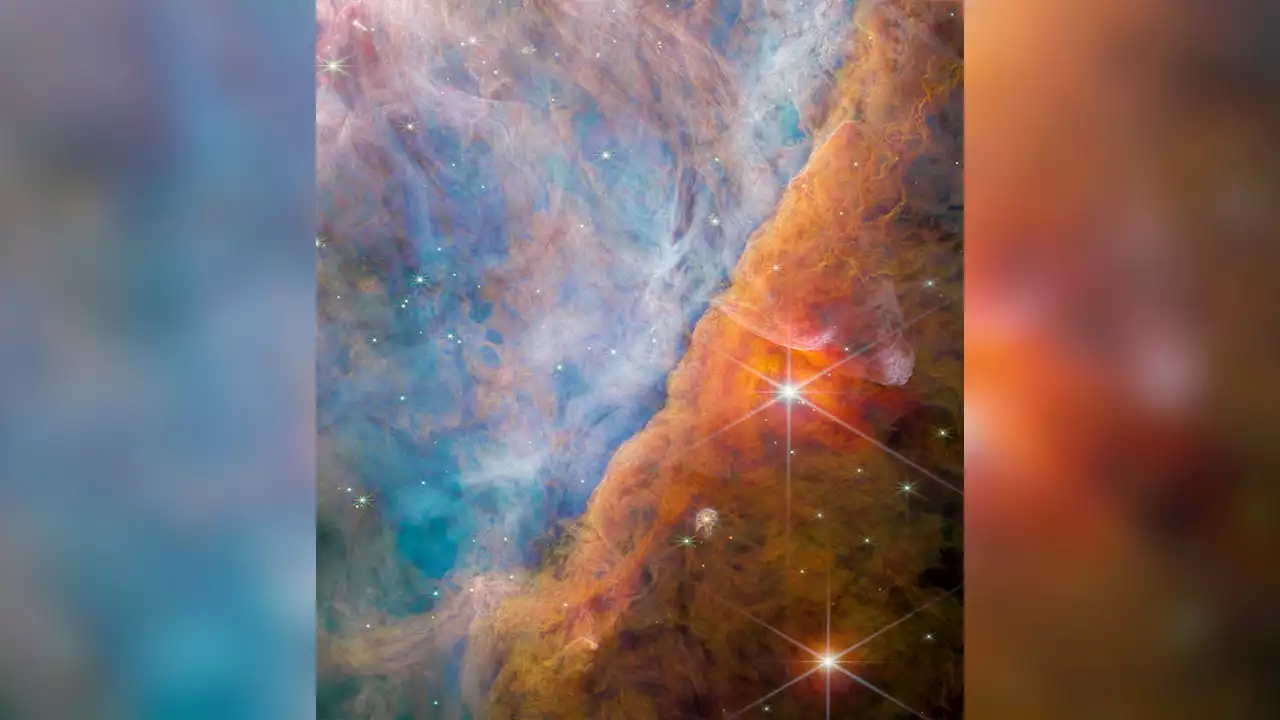 Building blocks for life found in space by NASA’s James Webb Space TelescopeMethyl cation was found in a young star system with the protoplanetary disk d203-506, located about 1,350 light-years away in the Orion Nebula.
Building blocks for life found in space by NASA’s James Webb Space TelescopeMethyl cation was found in a young star system with the protoplanetary disk d203-506, located about 1,350 light-years away in the Orion Nebula.
Read more »
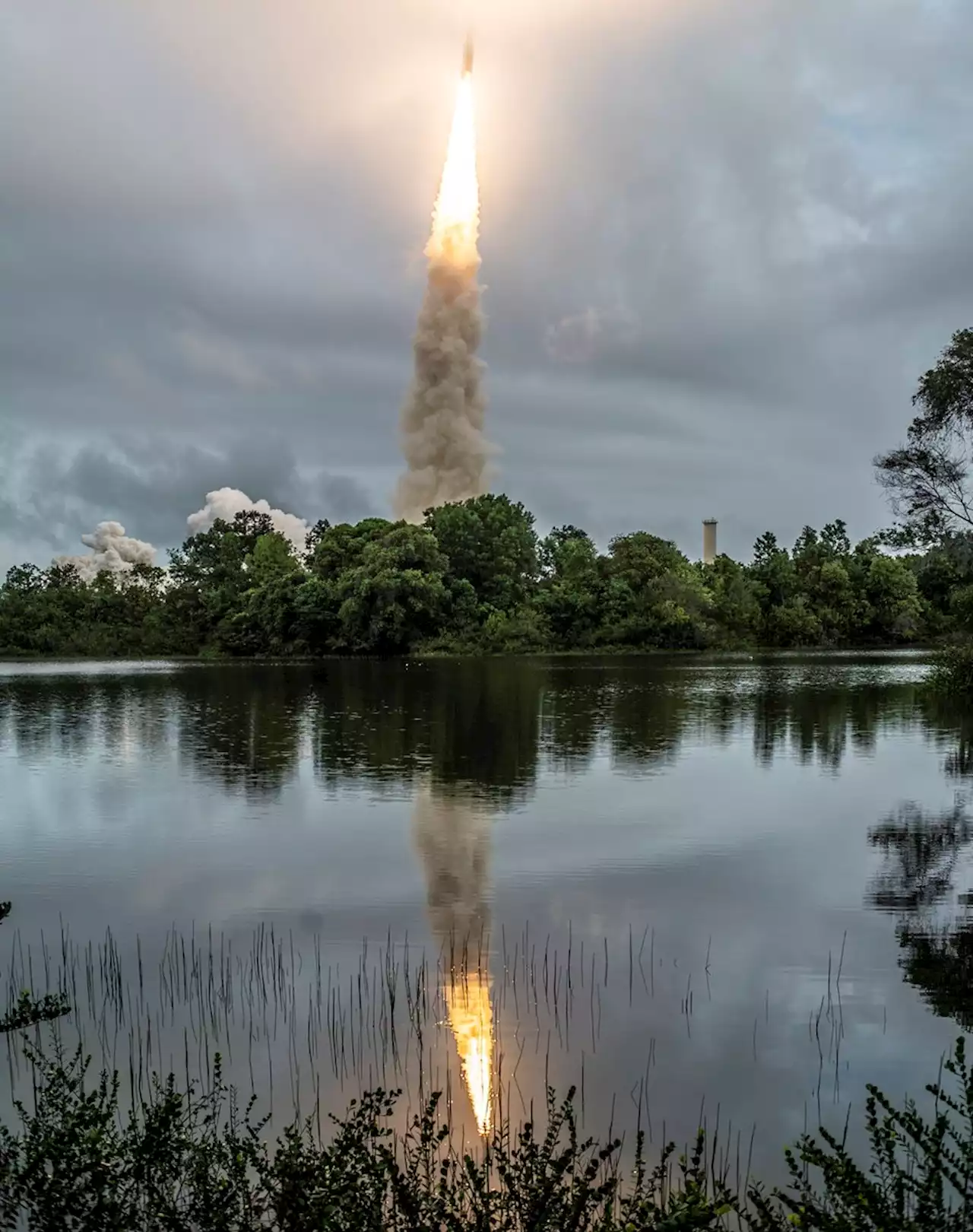 Webb Image Release- Webb Space Telescope GSFC/NASAThe Latest NASA Released Webb Image is featured on this page. The James Webb Space Telescope's revolutionary technology will study every phase of cosmic history—from within our solar system to the most distant observable galaxies in the early universe. Webb’s infrared telescope will explore a wide range of science questions to help us understand the origins of the universe and our place in it. Seeking Light from the First Galaxies in the Universe Webb will directly observe a part of space and time never seen before. Webb will gaze into the epoch when the very first stars and galaxies formed, over 13.5 billion years ago. Ultraviolet and visible light emitted by the very first luminous objects has been stretched or 'redshifted' by the universe's continual expansion and arrives today as infrared light. Webb is designed to “see” this infrared light with unprecedented resolution and sensitivity. Exploring Distant Worlds and the Solar System Webb will also be a powerful tool for studying the nearby universe. Scientists will use Webb to study planets and other bodies in our solar system to determine their origin and evolution and compare them with exoplanets, planets that orbit other stars. Webb will also observe exoplanets located in their stars’ habitable zones, the regions where a planet could harbor liquid water on its surface, and can determine if and where signatures of habitability may be present. Using a technique called transmission spectroscopy, the observatory will examine starlight filtered through planetary atmospheres to learn about their chemical compositions.
Webb Image Release- Webb Space Telescope GSFC/NASAThe Latest NASA Released Webb Image is featured on this page. The James Webb Space Telescope's revolutionary technology will study every phase of cosmic history—from within our solar system to the most distant observable galaxies in the early universe. Webb’s infrared telescope will explore a wide range of science questions to help us understand the origins of the universe and our place in it. Seeking Light from the First Galaxies in the Universe Webb will directly observe a part of space and time never seen before. Webb will gaze into the epoch when the very first stars and galaxies formed, over 13.5 billion years ago. Ultraviolet and visible light emitted by the very first luminous objects has been stretched or 'redshifted' by the universe's continual expansion and arrives today as infrared light. Webb is designed to “see” this infrared light with unprecedented resolution and sensitivity. Exploring Distant Worlds and the Solar System Webb will also be a powerful tool for studying the nearby universe. Scientists will use Webb to study planets and other bodies in our solar system to determine their origin and evolution and compare them with exoplanets, planets that orbit other stars. Webb will also observe exoplanets located in their stars’ habitable zones, the regions where a planet could harbor liquid water on its surface, and can determine if and where signatures of habitability may be present. Using a technique called transmission spectroscopy, the observatory will examine starlight filtered through planetary atmospheres to learn about their chemical compositions.
Read more »
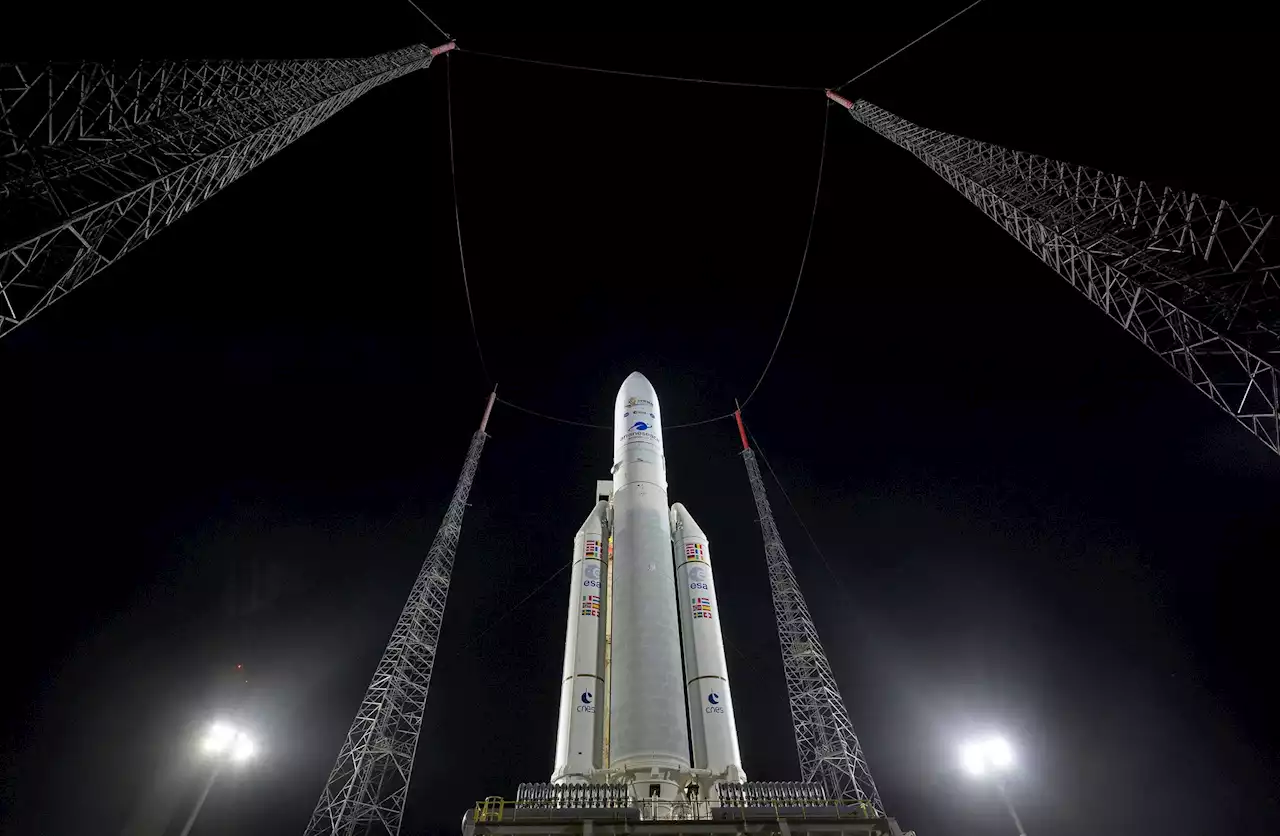 Despite pushback, NASA won't rename the James Webb Space TelescopeUnder Webb's tenure, a panic about the sexual orientation of government employees led to mass firings and discriminatory policies during what is called the Lavender Scare.
Despite pushback, NASA won't rename the James Webb Space TelescopeUnder Webb's tenure, a panic about the sexual orientation of government employees led to mass firings and discriminatory policies during what is called the Lavender Scare.
Read more »
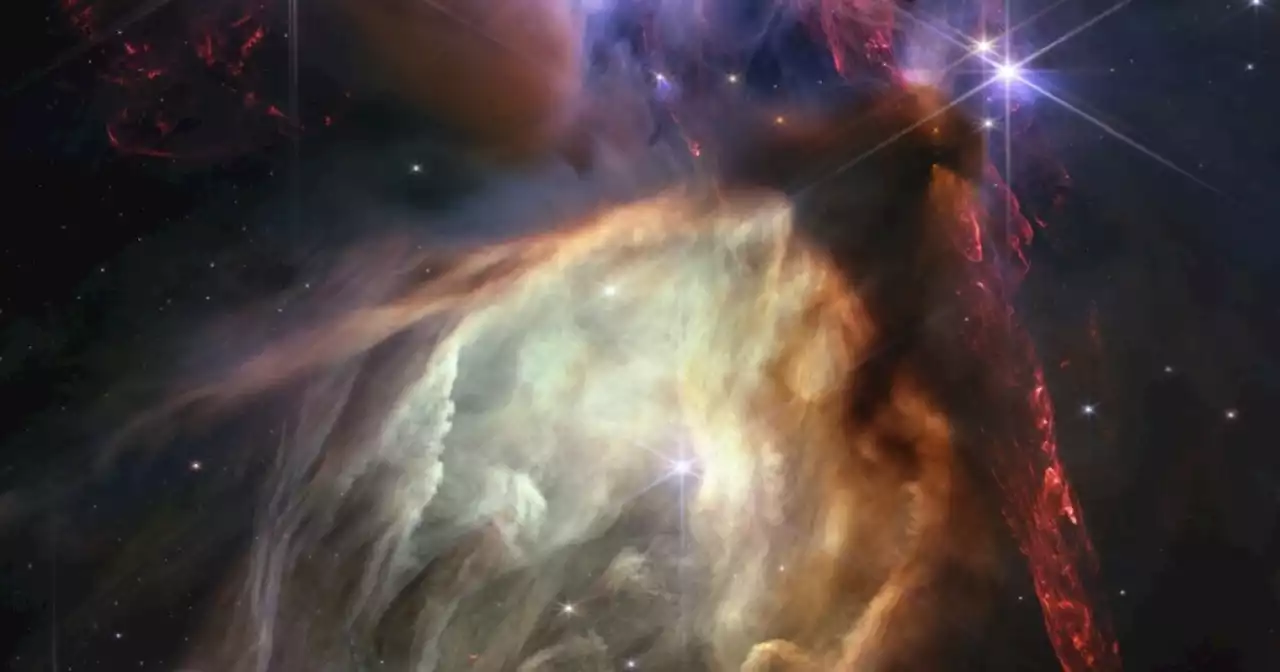 NASA's James Webb Space Telescope celebrates first anniversaryNASA celebrated the first anniversary of the James Webb Space Telescope Wednesday by releasing a new image.
NASA's James Webb Space Telescope celebrates first anniversaryNASA celebrated the first anniversary of the James Webb Space Telescope Wednesday by releasing a new image.
Read more »
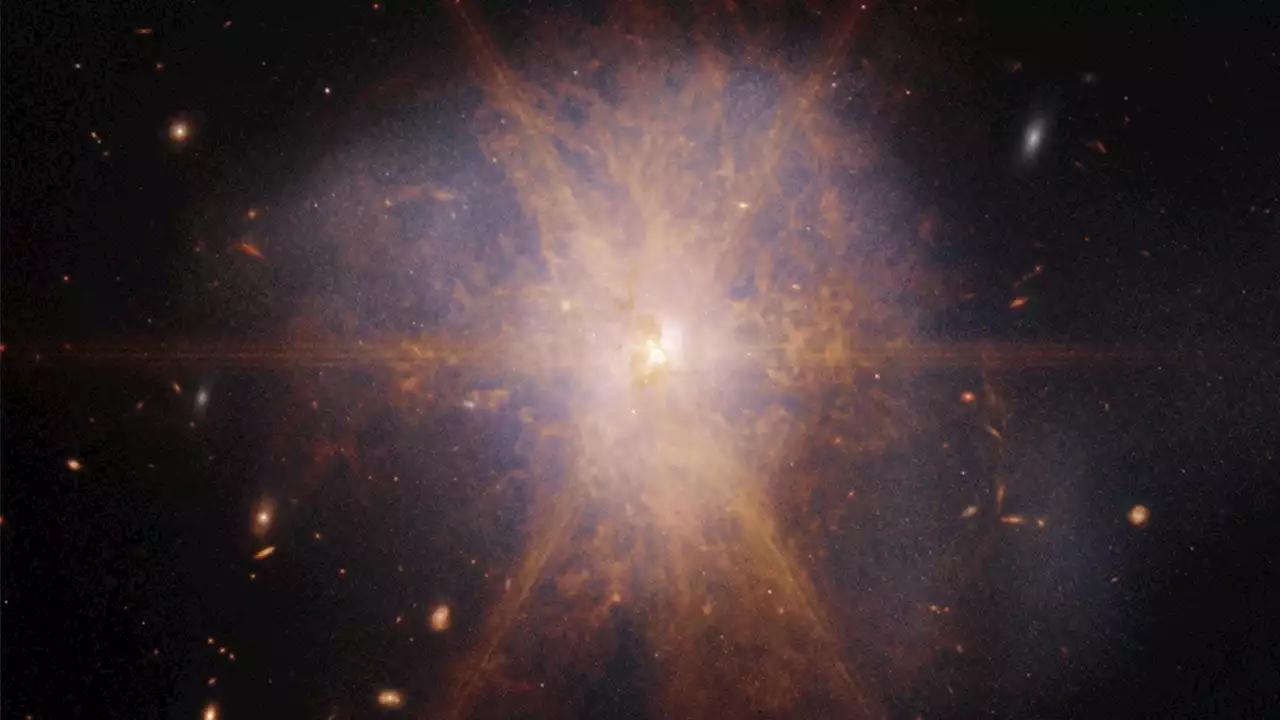 NASA's James Webb Space Telescope captures spectacular image of ultra-bright merging galaxiesNASA’s James Webb Space Telescope has captured a stunning image of Arp 220, a merger of galaxies more than 700 million years old and with a luminosity of more than a trillion suns.
NASA's James Webb Space Telescope captures spectacular image of ultra-bright merging galaxiesNASA’s James Webb Space Telescope has captured a stunning image of Arp 220, a merger of galaxies more than 700 million years old and with a luminosity of more than a trillion suns.
Read more »
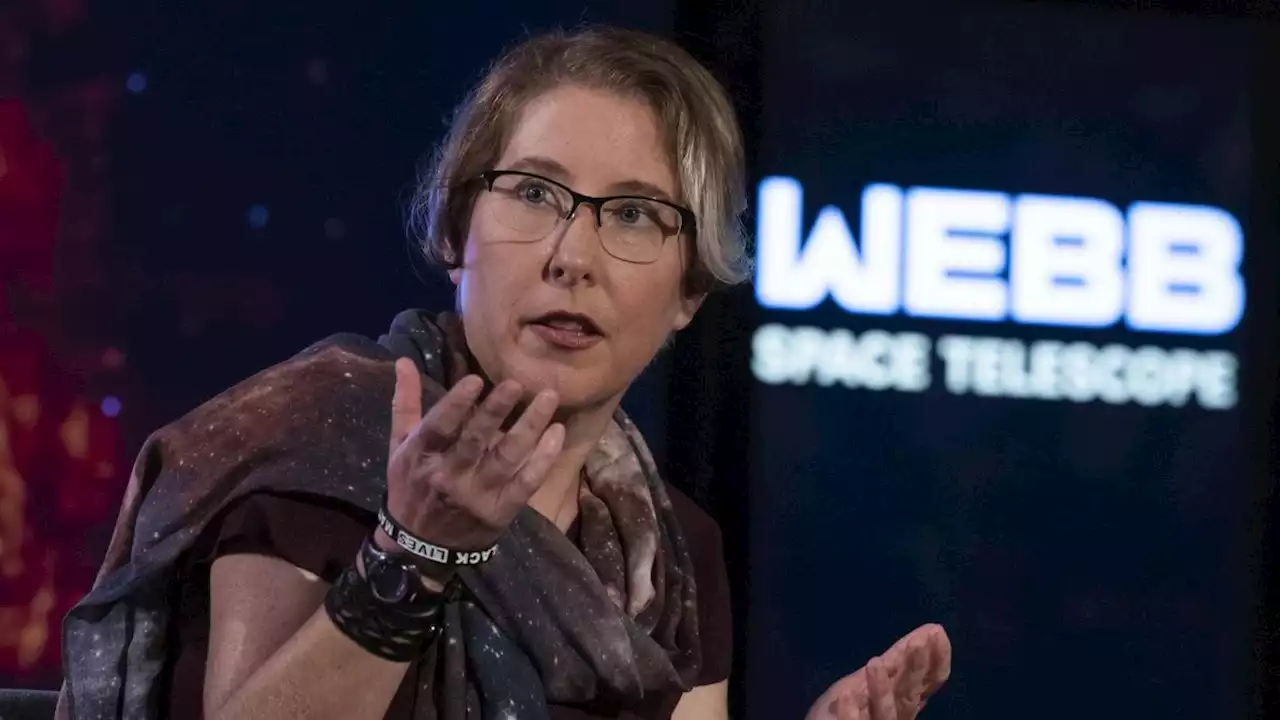 NASA selects new head of science for the James Webb Space TelescopeThe longtime agency insider has a distinguished career at NASA.
NASA selects new head of science for the James Webb Space TelescopeThe longtime agency insider has a distinguished career at NASA.
Read more »
